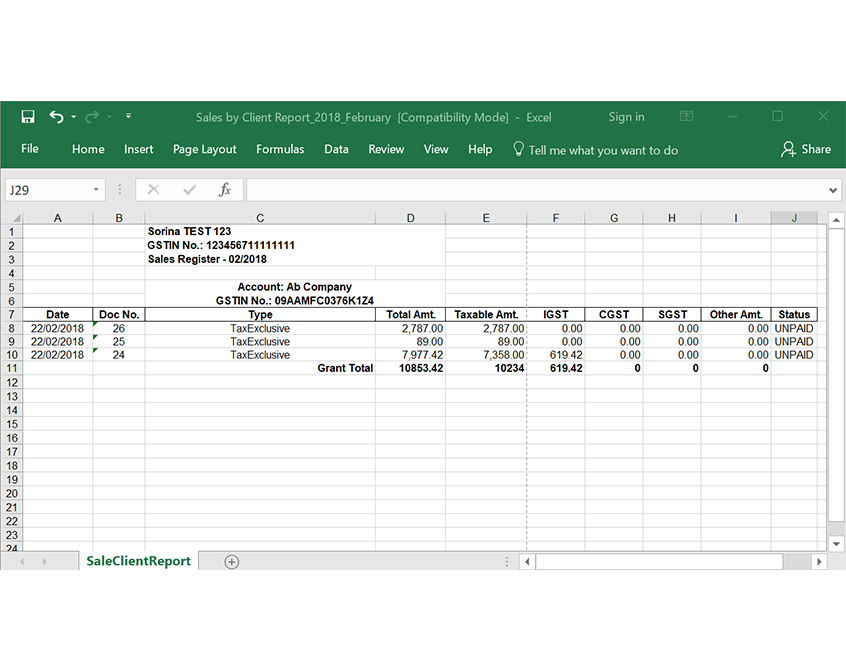

- Inventory for small business taxes software#
- Inventory for small business taxes download#
Inventory management techniques to optimize and keep track of stock It’s meant to help operations function normally before the primary problem is taken care of. Decoupling inventoryĭecoupling inventory are additional items that are set aside in case the production process suffers from technical issues, such as broken machinery. Safety stock = (Maximum daily sales x Maximum lead time) – (Average daily sales x Average lead time). Here’s the formula for better illustration:
Multiply your average daily sales with your average lead time. Multiply your maximum daily sales with your maximum lead time, or the number of days it takes for your items to arrive at your premises. To manage the inventory levels in your safety stock, here are some helpful guidelines: Make sure not to overstock so that you can keep the maintenance costs low. Ideally, the number of items you have in this group should be able to satisfy the current demand. This is an additional set of products that are specifically made to manage emergency situations, such as unexpected demands or supply chain disruptions.įor example, if your wholesaler takes a longer time to deliver your products, you can display your safety stock to avoid losing sales. If the cycle stock inventory runs out, many businesses will use their safety stock. Goods used for shipping or storing the products, such as boxes or cases for bottled drinks.Ĭycle stock inventory is the first set of stock that you will use to fulfill the customers’ demands on a regular basis.Īs each of your items sells, you will use the goods from your cycle stock inventory to replace the purchased products on your store shelves. Some examples include the bag that encases foods like potato chips or a carton box for bath bombs. Materials that protect and display the product. The items in this inventory category are used for packaging and shipping. For food businesses, these include supplies that support the cooking or baking processes, such as ovens or other kitchen appliances. 
Short for Maintenance, Repair, and Operations, objects in this type of inventory are used to turn raw goods into finished products. As the name suggests, this inventory covers goods that have completed the production process and are ready for purchase orders. This type of inventory also applies to businesses that outsource their products from third-party suppliers, such as a boutique business that buy clothing from wholesalers and then resells them.
Inventory for small business taxes software#
These would be shoes or clothes requiring additional stitching or computer software missing key features. These are the items that are still in production and are not ready for sale.

As you manage the raw materials in your inventory, you can calculate how many products you can manufacture in the future, and when new shipments should be made. If you make your own products, the goods required to produce products are called raw materials. For instance, if you sell baked goods, your raw materials would include ingredients such as flour, eggs, or sugar. Let’s look at the different types of inventory there are: To optimize your inventory management system, you need to know what kinds of goods your business is dealing with. If your products are always available during peak periods, buyers won’t leave you for your competitors. Predict when you will run out of these goods and restock them beforehand.
Keep your high-demand products stocked. Avoid picking and delivering the wrong items, or displaying an incorrect number of stock levels on your website. Order the appropriate amount of raw goods if you manufacture your own products. Holding dead stock or unsold products in your inventory can diminish your return on investment. Other benefits of inventory management include: It can also prevent stockouts, which can cause you to lose potential customers. The aim of using an effective inventory management system is to keep track of inventory and figure out the volume of goods you need to have on hand to keep operations running.Īs a result, you can avoid storing too much inventory and reduce maintenance costs. Inventory management is a set of techniques used to keep track of all your goods – from the time they enter your storage facility and you take ownership, up until they are sold and shipped out. 
Inventory for small business taxes download#
DOWNLOAD FREE EBOOK What is inventory management and why is it important?








 0 kommentar(er)
0 kommentar(er)
